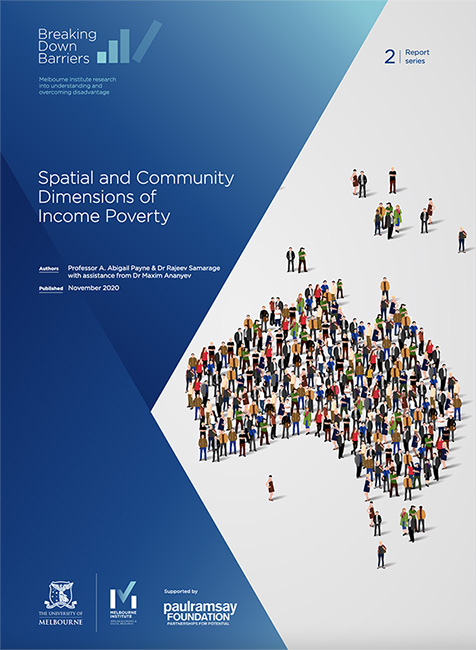Spatial and Community Dimensions of Income Poverty
This report captures the dynamic state of poverty in Australia, highlighting the extent to which community poverty rates have changed over time.

This report provides a snapshot of community level income poverty rates in Australia across communities and over time. Given many previous poverty reports have focused on national poverty rates, this report provides important new insights that should challenge our assumptions about developing policy with just a national focus.
Poverty is a whole of Australia problem. 40% of communities report a poverty rate at or greater than 125 of the population and while we observe higher rates of poverty in communities in the Northern Territory, there are communities in all states with poverty rates that are well above the national average.
Our analysis also demonstrates a variance in poverty rates based on household type. We have demonstrated that the correlations between high poverty and socio-economic measures vary across communities with average rates of poverty in communities highest for single persons and single parent households and lowest for two parent households.
While overall poverty rates are improving, poverty continues to be a complex social and economic problem requiring innovative practices and policy to resolve. Understanding what is needed to address this complexity involves exploring the dynamics of choice and household circumstances and the relationships between household characteristics and community environments.
Read the full report Request a briefing
AUTHORS
Professor A. Abigail Payne
Dr Rajeev Samarage
Dr Maxim Ananyev